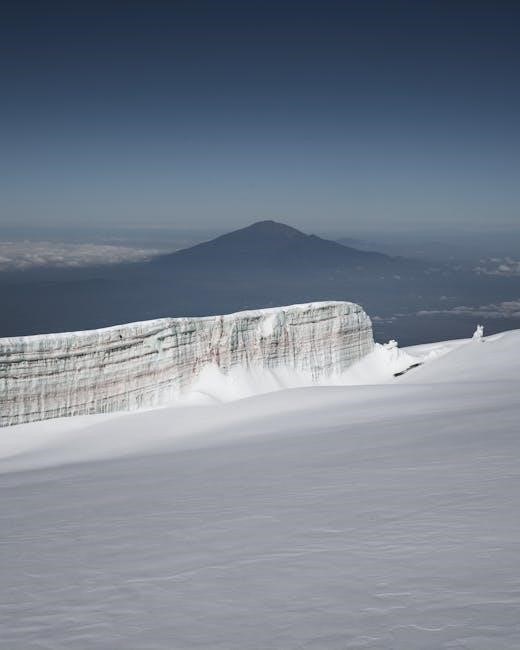Ernest Hemingway’s The Snows of Kilimanjaro is a poignant short story reflecting themes of regret, mortality, and lost opportunities, available as a popular PDF download.
1.1 Overview of the Short Story
The Snows of Kilimanjaro is a profound short story by Ernest Hemingway, exploring themes of regret, mortality, and unfulfilled ambition. The narrative centers on Harry, a dying writer reflecting on his life, loves, and missed opportunities while on an African safari. Hemingway’s minimalist style captures the emotional depth of Harry’s final moments, juxtaposing his inner turmoil with the serene yet imposing backdrop of Mount Kilimanjaro. The story, widely acclaimed for its psychological complexity, is available in PDF format for readers worldwide.
1.2 Ernest Hemingway’s Style and Themes
Ernest Hemingway’s distinctive minimalist style shines in The Snows of Kilimanjaro, employing his Iceberg Theory to convey deeper meanings beneath sparse prose. Themes of regret, mortality, and the human condition dominate, reflecting Hemingway’s preoccupation with existential struggles. His use of flashbacks and vivid imagery, set against the African landscape, underscores the protagonist’s inner turmoil. The story’s emotional depth and philosophical undertones exemplify Hemingway’s mastery of exploring universal truths through concise, powerful storytelling.
1.3 Significance of the Title
The title The Snows of Kilimanjaro symbolizes the icy grip of death and the unattainable. Kilimanjaro, Africa’s highest peak, represents distant aspirations and unfulfilled dreams. The snow, often associated with purity and finality, mirrors the protagonist Harry’s existential reckoning. The title encapsulates themes of mortality, regret, and the elusiveness of life’s ambitions, drawing a stark contrast between the frozen mountain and the African plains where Harry faces his end, creating a haunting metaphor for life’s transient nature.

Publication and Background
First published in 1936, The Snows of Kilimanjaro was later included in Hemingway’s collection The Fifth Column and the First Forty-Nine Stories in 1938. The story is now widely available as a PDF, making it accessible to readers worldwide.
2.1 Original Publication Details
The Snows of Kilimanjaro was first published in 1936 in Esquire magazine. It was later included in Hemingway’s collection The Fifth Column and the First Forty-Nine Stories, published by Scribner in 1938. The story has since been widely anthologized and is now accessible as a PDF, part of various digital collections of Hemingway’s works, including The Snows of Kilimanjaro and Other Stories.
2.2 Historical Context of the Story
The story is set against the backdrop of African colonialism in the 1930s, reflecting Hemingway’s personal experiences as a big-game hunter. The historical context of colonialism and the decline of the British Empire influenced the narrative’s themes of decay and mortality. The PDF versions of the story often include annotations that highlight these historical elements, providing readers with a deeper understanding of the era in which it was written.
2.3 Hemingway’s Inspiration and Influences
Hemingway drew inspiration from his African safaris and experiences as a hunter and soldier. His Iceberg Theory influenced the story’s subtle narrative style. The PDF versions of The Snows of Kilimanjaro often include insights into how his personal life, including his marriages and career, shaped the themes of regret and mortality. These influences are evident in the story’s reflective tone and the protagonist’s introspective journey, making the PDF a valuable resource for understanding Hemingway’s creative process and literary legacy.
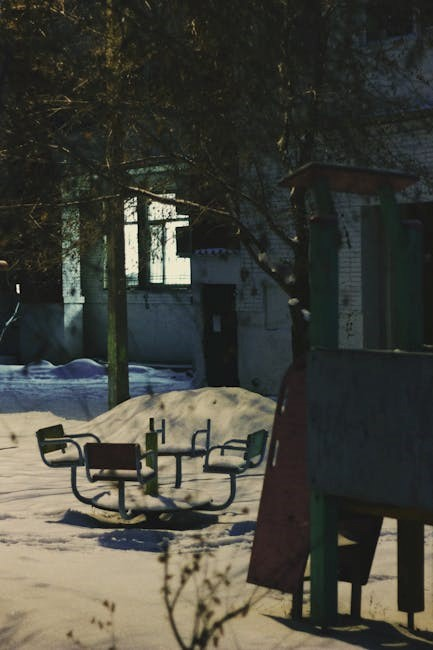
Plot Summary
The story centers on Harry, a dying writer on an African safari, reflecting on his life, regrets, and lost opportunities, while his wife Helen tries to comfort him.
3.1 Setting and Atmosphere
The story unfolds on an African safari near Mount Kilimanjaro, evoking a sense of isolation and impending doom. The dusty plains and distant snow-capped mountain create a stark contrast, mirroring Harry’s internal struggles. The atmosphere is tense and reflective, with the African landscape serving as a backdrop for Harry’s final moments. The setting heightens the emotional weight of Harry’s mortality and regret, immersing readers in a world of both beauty and despair.
3.2 Main Characters and Their Roles
Harry, the protagonist, is a writer dying of gangrene, reflecting on his life’s choices and regrets. His wife, Helen, embodies loyalty and compassion, trying to comfort him despite his bitterness. The characters’ interactions reveal their complex relationship, with Harry’s introspection dominating the narrative. Minor characters, like the servants, play peripheral roles, focusing attention on Harry’s internal conflict and existential crisis, central to the story’s emotional depth and themes of mortality and lost opportunities.
3.4 The Ending and Its Interpretation
The ending of The Snows of Kilimanjaro is deeply symbolic, with Harry’s death mirroring his emotional surrender. As he gazes at Kilimanjaro, the snow represents purity and transcendence, contrasting his tainted life. The final moment, with Helen finding him dead, underscores themes of regret and the inevitability of mortality. Interpretations vary, but the conclusion emphasizes Harry’s unresolved inner struggles and the enduring power of nature, leaving readers with a haunting reflection on life’s unfulfilled potential.

Themes and Symbolism
The story explores themes of regret, mortality, and materialism, symbolized by the snow-capped Kilimanjaro and the leopard, representing purity, transience, and the decay of human endeavor.
4.1 The Theme of Regret and Lost Opportunities
Harry’s journey is marked by profound regret over unfulfilled potential and compromised integrity. His decision to marry for wealth rather than pursue genuine passion reflects a life of missed chances. The snows of Kilimanjaro symbolize the cold, unforgiving nature of time, which has left Harry’s ambitions unattained. His bitterness toward his choices underscores Hemingway’s exploration of how regret can consume the human spirit, leaving only a legacy of what could have been.
4.2 Mortality and the Human Condition
The story delves into the inevitability of death and humanity’s confrontation with it. Harry’s physical decline, due to gangrene, mirrors his existential despair, as he reflects on a life unlived. The snow-capped Kilimanjaro serves as a haunting reminder of time’s passage and the finality of death. Hemingway’s portrayal of Harry’s acceptance and bitterness underscores the universal human struggle to reconcile mortality with unfulfilled aspirations, illuminating the fragility of life and the weight of unrealized potential.
4.3 The Role of Money and Materialism
Harry’s reliance on wealthy women highlights the corrupting influence of materialism. His marriages for financial security symbolize a sacrifice of artistic integrity and personal fulfillment. The contrast between his luxurious lifestyle and inner emptiness critiques societal values that prioritize wealth over passion and creativity. Hemingway portrays money as a double-edged sword, providing comfort yet suffocating the soul, emphasizing the tension between material comfort and emotional impoverishment in Harry’s tragic narrative.
4.4 Symbolism of the Leopard and the Snow
The leopard on Kilimanjaro symbolizes grace and purity, contrasting with Harry’s internal decay. The snow represents both beauty and finality, mirroring Harry’s fate. The leopard’s presence at the summit suggests something unattainable, reflecting Harry’s regrets. The snow’s purity juxtaposes the corruption of materialism, emphasizing life’s transience. Together, these symbols underscore the themes of mortality, lost opportunities, and the search for meaning in a fleeting existence, central to Hemingway’s narrative.
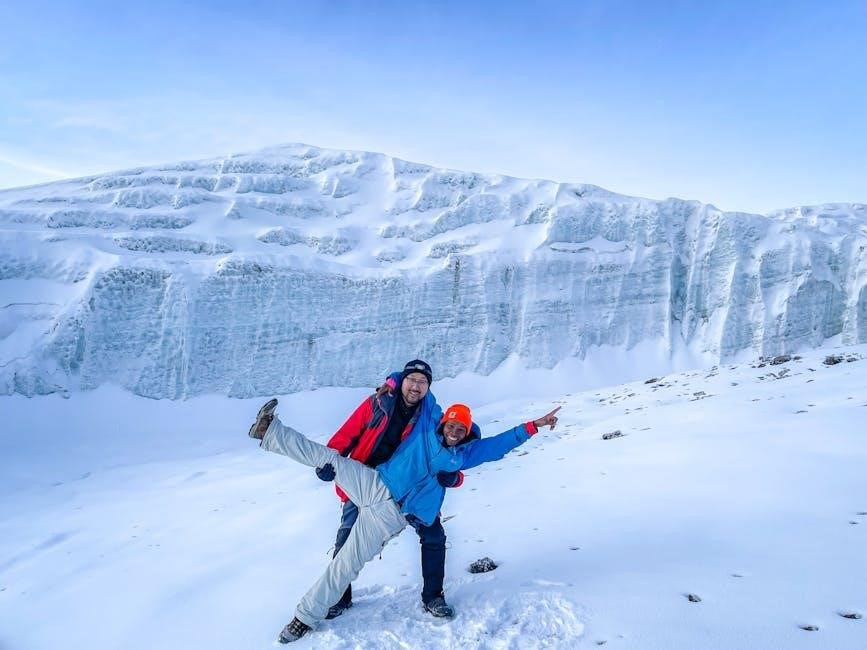
Character Analysis
Harry, a writer grappling with mortality, and Helen, his supportive wife, drive the narrative. Their complex relationship and inner struggles reveal deeper human emotions and existential themes.
5.1 Harry: The Protagonist’s Struggles
Harry, a writer dying of gangrene, reflects on his life with bitter regret. His struggles stem from unfulfilled potential, failed marriages, and a search for meaning. Hemingway portrays Harry’s internal conflict through flashbacks, revealing his disillusionment with wealth and love. The snows of Kilimanjaro symbolize his elusive dreams and impending mortality, emphasizing themes of regret and the human condition. Harry’s story is a poignant exploration of wasted opportunities and the pursuit of artistic integrity.
5.2 Helen: The Supporting Character’s Perspective
Helen, Harry’s wife, represents loyalty and resilience amidst his decline. Her unwavering support contrasts with Harry’s self-pity and regret. Through her interactions, Hemingway highlights the emotional depth of their relationship, showcasing her as a stabilizing force. Helen’s perspective underscores themes of love and sacrifice, providing a counterpoint to Harry’s existential despair. Her character adds complexity to the narrative, illustrating the human capacity for compassion in the face of mortality and personal failure.
5.3 Harry and Helen’s Relationship Dynamics
Harry and Helen’s relationship is marked by tension and emotional complexity. Harry’s bitterness and regret contrast with Helen’s patience and care. Their interactions reveal a deep connection, yet Harry’s dying thoughts expose unresolved conflicts. Helen’s loyalty and support highlight her strength, while Harry’s self-pity underscores his inner turmoil. Their dynamics reflect themes of love, regret, and mortality, adding depth to the narrative’s exploration of human relationships and existential struggles.
5.4 Minor Characters and Their Impact
Minor characters in The Snows of Kilimanjaro play a subtle yet significant role in shaping the narrative. Harry’s past wives and the African servants serve as reminders of his life choices and regrets. These characters, though peripheral, influence Harry’s reflections, highlighting his unresolved emotional conflicts. Their presence underscores the themes of love, loss, and mortality, enriching the story’s depth without overshadowing the central dynamics between Harry and Helen. Their roles are pivotal in reinforcing the story’s emotional and philosophical undertones.
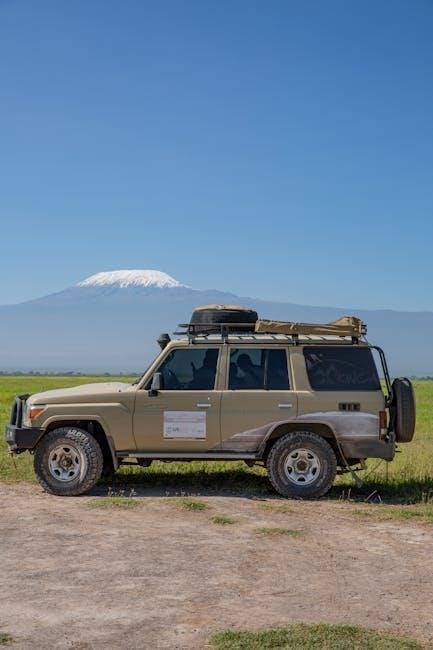
Literary Devices and Techniques
Hemingway employs the Iceberg Theory, flashbacks, and minimalist prose to convey deep emotional complexity. These techniques enhance the story’s themes and character development effectively.
6.1 Hemingway’s Iceberg Theory
Hemingway’s Iceberg Theory is evident in The Snows of Kilimanjaro, where most of the story’s depth lies beneath the surface. The narrative subtly hints at Harry’s regrets and emotional struggles through sparse dialogue and minimal descriptions, leaving much to the reader’s interpretation. This technique creates a powerful, layered story that resonates deeply. The PDF version of the story highlights this method, allowing readers to appreciate Hemingway’s mastery of understatement and implied meaning, enhancing the overall impact of the narrative.
6.2 Use of Flashbacks and Non-Linear Narrative
In The Snows of Kilimanjaro, Hemingway employs flashbacks and a non-linear narrative to explore Harry’s past, revealing his regrets and unfulfilled ambitions. The story shifts seamlessly between Harry’s current struggle with death and his memories of life choices. This structure enhances the emotional depth, allowing readers to piece together Harry’s inner turmoil. The PDF version of the story illustrates how Hemingway’s use of non-linear storytelling creates a complex, layered narrative that engages readers and underscores the themes of mortality and lost opportunities.
6.3 Minimalist Writing Style
Hemingway’s minimalist style in The Snows of Kilimanjaro is evident through concise sentences and sparse descriptions. The PDF version highlights how this approach emphasizes emotional intensity over elaborate details. Dialogues are direct, and the narrative avoids unnecessary embellishments, focusing on Harry’s internal struggles and the stark African landscape. This style creates a powerful, uncluttered narrative that aligns with Hemingway’s Iceberg Theory, leaving much to the reader’s interpretation while conveying deep themes of regret and mortality.
6.4 Dialogue and Character Development
In The Snows of Kilimanjaro, Hemingway’s dialogue is sparse yet impactful, revealing character traits and emotional depth. Harry’s bitterness and regret are evident in his exchanges with Helen, whose supportive role contrasts with his self-loathing. The PDF version underscores how Hemingway uses brief, direct conversations to expose the complexities of their relationship and Harry’s inner turmoil. This minimalist approach to dialogue enhances the story’s emotional intensity, making it a hallmark of Hemingway’s storytelling style.
Cultural and Historical References
The Snows of Kilimanjaro references Africa’s cultural landscape, highlighting the significance of Mount Kilimanjaro and its spiritual importance to locals. The story reflects colonial-era safari traditions and the historical context of 1930s Africa, blending Hemingway’s personal experiences with the region’s rich history, as detailed in the PDF version.
7.1 Kilimanjaro’s Cultural Significance
Kilimanjaro, Africa’s highest mountain, holds profound cultural and spiritual significance. Its snow-capped peak, known as the “House of God” to the Masai people, symbolizes divine presence and eternal beauty. In Hemingway’s story, the mountain serves as a backdrop for Harry’s introspection, linking human mortality to nature’s grandeur. The PDF version of The Snows of Kilimanjaro highlights how the mountain’s imagery reflects themes of transcendence and existential contemplation, resonating deeply with readers worldwide.
7.2 African Safari and Colonialism

The African safari in The Snows of Kilimanjaro reflects the colonial era’s exploitation of natural resources and labor. Hemingway portrays the safari as a symbol of privilege, highlighting the moral decay of wealthy elites. The story critiques colonial attitudes through Harry’s bitter reflections on his life, emphasizing the superficiality of colonial adventures. The PDF version underscores how the safari setting mirrors the characters’ inner emptiness, offering a poignant commentary on colonialism’s ethical failures and societal pretenses.
7.3 Historical Context of the 1930s
The Snows of Kilimanjaro, written in 1938, reflects the societal and political tensions of the 1930s. Hemingway’s story captures the era’s disillusionment with colonialism and wealth, influenced by the Great Depression and rising fascism. The African setting mirrors the moral decay of the time, while Harry’s regrets symbolize the lost ideals of the generation. The PDF version highlights Hemingway’s critique of privilege and societal pretenses, offering a timeless commentary on human frailty and the search for meaning in a fractured world.
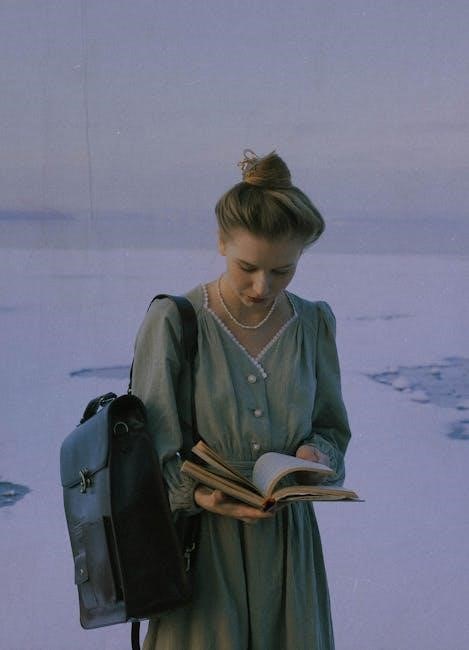
Comparisons with Other Works
The Snows of Kilimanjaro mirrors themes of mortality and regret found in The Death of Ivan Ilyich and The Short Happy Life of Francis Macomber, showcasing Hemingway’s exploration of human frailty and existential crises in a concise, powerful narrative style, as highlighted in its PDF version.
8.1 Comparison with “The Short Happy Life of Francis Macomber”
Both The Snows of Kilimanjaro and The Short Happy Life of Francis Macomber explore themes of mortality, regret, and personal failure. Like Harry in The Snows, Francis Macomber faces a tragic demise, highlighting Hemingway’s fascination with flawed protagonists and existential crises. Both stories feature vivid African settings and a focus on human frailty, showcasing Hemingway’s ability to weave profound emotional depth into concise narratives, further enriched in their PDF formats.
8.2 Similarities with “The Death of Ivan Ilyich” by Tolstoy
The Snows of Kilimanjaro shares existential themes with Tolstoy’s The Death of Ivan Ilyich, both exploring mortality, regret, and the search for life’s meaning. Harry, like Ivan, confronts alienation and reflects on wasted opportunities, realizing too late the emptiness of material pursuits. Both protagonists face death with a mix of fear and acceptance, highlighting the universal human struggle to find purpose. These parallels underscore the timeless relevance of both works, available in PDF formats for deeper analysis.
8.3 Hemingway’s Other Stories in the Same Collection
Hemingway’s collection, including The Snows of Kilimanjaro, features other notable works like The Short Happy Life of Francis Macomber and Old Man at the Bridge. These stories showcase his mastery of themes such as mortality, regret, and human resilience. The collection highlights Hemingway’s minimalist style, offering vivid, emotionally charged narratives that explore the complexities of life. Together, these works provide a rich tapestry of Hemingway’s literary genius, resonating with readers in PDF and other formats.

Adaptations and Legacy
The Snows of Kilimanjaro has been adapted into films, cementing its literary impact. Its themes of regret and mortality resonate deeply, making it a timeless classic in Hemingway’s canon, with the PDF version ensuring its continued accessibility and influence.
9.1 Film Adaptations of the Story
The Snows of Kilimanjaro has been adapted into films multiple times, with notable versions in 1952, 1977, and 1996. These adaptations bring Hemingway’s poignant tale to life, capturing themes of regret and mortality. The 1952 film, starring Gregory Peck, is particularly celebrated for its faithful portrayal of Harry’s introspective journey. The story’s universal appeal continues to inspire filmmakers, while the PDF version remains a popular choice for readers seeking a deeper connection to the narrative.
9.2 Impact on Literary Canon
The Snows of Kilimanjaro is widely regarded as a cornerstone of 20th-century literature, influencing modernist storytelling. Its themes of existential reflection and concise prose have left a lasting mark on the literary world. The story’s inclusion in anthologies and academic curricula underscores its significance. Available in PDF format, it remains accessible to new generations, ensuring Hemingway’s legacy endures in contemporary literary discourse and education.
9.3 Popular Reception and Reviews
The Snows of Kilimanjaro has garnered widespread acclaim for its profound exploration of human emotions and Hemingway’s signature sparse prose. Readers praise its accessibility in PDF format, making it a favorite among literary enthusiasts. The story’s themes of regret and mortality resonate deeply, while its vivid African setting captivates audiences. Critics highlight its emotional depth and enduring relevance, solidifying its place as a must-read in modern literature.

PDF Download and Accessibility
The Snows of Kilimanjaro is widely available as a free PDF download, offering easy access to Hemingway’s timeless tale. Its digital format makes it accessible globally.
10.1 Availability of the PDF Version
The PDF version of The Snows of Kilimanjaro is readily available for download from various online sources, including academic databases and literary websites. Readers can access the story in multiple formats, such as PDF, Word Doc, and Text File, ensuring compatibility with different devices. Additionally, adapted versions for language learners and annotated editions for scholars are widely accessible, making Hemingway’s classic tale more approachable for a global audience.
10.2 Reading the Story in Different Formats
Readers can enjoy The Snows of Kilimanjaro in various formats, including PDF, Word Doc, and Text File, ensuring accessibility across devices. Adapted versions, such as those tailored for language learners, simplify comprehension while preserving the story’s depth. Additionally, annotated editions cater to scholars, offering insights into Hemingway’s techniques. These diverse formats make the story accessible to a broad audience, from casual readers to academic researchers, enhancing its reach and impact globally.
10.3 Resources for Further Study
For deeper analysis, readers can access PDF versions of The Snows of Kilimanjaro alongside scholarly articles and study guides. Resources include Hemingway’s original texts, critical essays, and annotated editions. Lyall Powers’ analysis in Consuming Hemingway offers insights into the story’s themes and techniques. Additionally, cultural and historical context studies provide a richer understanding of the African setting and Hemingway’s inspirations, making these resources invaluable for students and enthusiasts alike.
